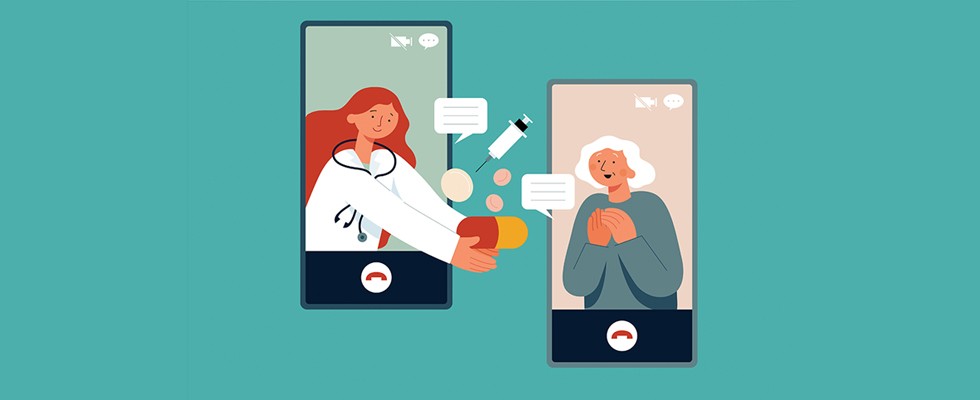
The COVID-19 pandemic hastened the transition of many businesses to online solutions. Now that the virus has become endemic, these remote tools have proven themselves to be so valuable that discarding them would be a mistake.
In particular, health care has benefited from the rise of telehealth, which connects patients quickly and easily with their providers. These innovations have opened up new possibilities for professionals who provide care at home.
Telehealth & Virtual Care
Telehealth is an umbrella term that includes a range of medical services, including curative care, patient education and even training for health care professionals.
One of the branches of telehealth is virtual health care, which is sometimes referred to as telemedicine. This subset focuses on diagnosing patients and managing disease through technology like video consultations, remote monitoring and digital health records.According to the Centers for Disease Control, physicians’ use of telemedicine shot up from 15.4% in 2019 to 86.5% in 2021.
Interest in telehealth remains high today. According to recent numbers from the 2024 National Telehealth Survey, 54% of Americans report having experienced a telehealth appointment. Of those, 89% describe themselves as satisfied with the visit.
Virtual health care plays a vital role in telehealth that caregivers and medical professionals can leverage to better serve those under their care.
Easy Access to Providers
A benefit of virtual health care for homecare professionals is that distance becomes irrelevant. This expanded access is particularly important for underserved rural populations.
With virtual health care, patients who would otherwise struggle to do an in-person visit, such as those with mobility issues, can access the care they need. As a report from the Center for Disability Health and Wellness at the University of Michigan notes, “Recent research indicates that a shift to telehealth can lead to declines in emergency department visits [for people with disabilities] as well as benefits from home health attendant services that can be delivered virtually.”
It’s common for people to feel more comfortable in their own homes. For example, a recent Cross Country Workforce Solutions Group survey indicated that 70% of people aged 50 or older prefer in-home care.
Virtual health care solutions also eliminate the downtime and stress that can come with waiting rooms. Worse yet, studies have associated these waiting rooms with the spread of airborne diseases. One published in the British Journal of General Practice describes them as “a collection of viral and bacterial incubators.”
How Homecare Providers Benefit
Homecare professionals and caregivers can also reap the rewards of digital transformation. Remote monitoring devices enable you to keep tabs on your charges at all times of day or night, regardless of where you yourself may be. These systems can ensure that patients are managing medications and alert providers if a patient’s condition starts to destabilize or other problems emerge.
Virtual health care tools also allow caregivers to track patients’ progress in a single place that everyone on the medical team can access with ease. They can provide data in real-time, ensuring the care team has the most accurate information. This facilitates decision making, improves disease management and allows for more personalized treatment plans.
In addition, virtual health care tools streamline operations because they can automate scheduling, eliminate administrative hassles and optimize providers’ time, which allows them to see more patients. As a result, margins widen.
The Future of Care
Virtual health care has revolutionized care in the U.S. These technology solutions bridge physical distances, allowing home health care professionals and caregivers to ensure the best outcomes for their patients regardless of where they are. They also give care providers more tools to do what they do best, leading to increased benefits for patients’ health and overall satisfaction.
The U.S. is in the middle of a digital revolution that is opening up whole new possibilities for the future of care. Due to the many advantages virtual health care brings, providers and patients alike are increasingly embracing these innovative solutions. As these technologies advance further, they can be expected to be adopted even more widely.
